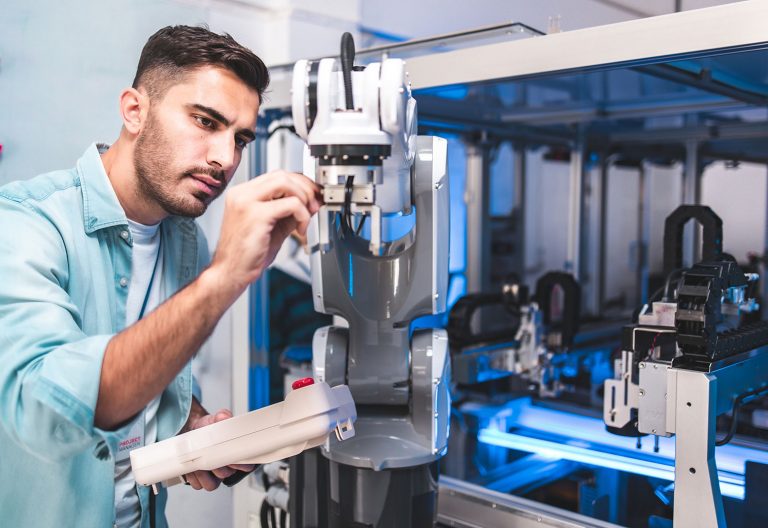What if you could always put the right engineer on the right project at the right time. Never hesitate about new opportunities because you have someone in your team with that unique skillset to do it. And all of this without having to worry about increased hiring costs. You’d probably be more productive and more innovative than your competitors, right? If that’s the dream, then you need a blended workforce strategy for your engineering team.
What is a blended workforce?
Having one or two freelancers in your engineering team doesn’t automatically make it a blended workforce. It requires strategically planning and combining full-time staff and non-permanent employees to meet the needs of your organisation. Some say it needs to be 25% or more, but the most important thing is that you’re including freelancers, gig workers, temporary workers and other non-permanent hires as part of your workforce.
The (blended) workforce of the future
A lot has been said and written about the future of work and the workforce of the future. Especially now that the pandemic has forced most organizations to work differently. Plus the freedom and flexibility of remote working for employees is not something everybody is willing to give up.
Roughly 40 percent of today’s labor market consists of part-time workers, freelancers, contractors and gig-workers. And this percentage is increasing. Which means that if you want to work with the best engineers and stay agile and competitive, moving to a blended workforce is the only possible scenario.
A recent study by the Harvard Business School also shows that 90% of business leaders who had worked with on-demand talent platforms – like Tasker – believe that these platforms are essential in order to stay competitive.
Increased innovation and creativity
An important benefit of having a blended workforce is that it constantly brings fresh new perspectives. Remember how the first couple of weeks in a new role is when you challenge how things are being done? It’s because you’re still unaware of company politics and the ‘that’s how we always do it’ thinking.
Hiring engineers on demand to complement your team means you’ll constantly have this dynamic. And we should emphasize the word complement here, because don’t underestimate the importance of your employees. They know your customers and the product better than anyone, so it’s by working together that real useful innovation happens.
Access to world-class engineers on demand
We all know how hard it is to attract and retain tech talent. And now that geography becomes less of a factor, you’re competing with the whole world!
But turn this around and it also means there’s a global talent pool out there. Capable and ready to solve your engineering problems today. You can hire them when and for as long as you need them. When it comes to working with engineers on demand, you can work with the best even if you wouldn’t be able to hire them permanently.
Adding specialized skillsets to your engineering team
It’s important for your engineering team to future-proof their skills so they stay relevant. But there’s not always time (or budget) for reskilling and upskilling. Especially when a problem or challenge requires a specialized skillset today that your team doesn’t (yet) have.
Or maybe you don’t even see a need to invest in those skills, because it’s a task that only needs to happen once.
For these type of situations, having a blended workforce with access to unique, specialized skillsets can be a lifesaver.
No more expensive hiring mistakes
Have you ever been nervous about hiring someone because essential skills were missing in your engineering team? When the need to hire someone permanently is most urgent, expensive hiring mistakes are often made. You need someone now, so the best available candidate will have to do.
But as we discussed before, finding the perfect candidate is only going to be more challenging. With a blended workforce, you can work with a skilled freelancer until you find the one you know is absolutely perfect. Innovation and productivity continues as it should and you can take your time to hire wisely.
Saving costs with a blended workforce
Aren’t freelance engineers and contractors more expensive to work with? Yes and no. Sure, if you only focus on their hourly rate they’ll cost you more in a workday than someone that works for you full-time. But that would be the wrong way to look at it.
In addition to avoiding the expensive hiring mistakes, there are also other on-going costs that you’re only paying for your employees. Think about healthcare, annual bonuses or office space (if the person works remotely).
Plus with a blended workforce you are more flexible to scale up and down when needed. You hire only when you need specific skills and experience, and it stops when you don’t. With your permanent employees you’re also paying when you need them less during certain moments in the year.
Finding and hiring engineers on demand
So the key to a blended workforce is that you get the best of both worlds. The stability and knowledge about the market, customers and your product from your full-time staff. And the flexibility and specialized skillset from your on-demand hires.
But there’s a clear difference between hiring these two groups. Your HR department combined with job boards and recruitment agencies will do a good job to find a permanent hire that also fits your company culture. Non-permanent hires however require a different approach. You need someone immediately and the most important thing is that they’ll give you the deliverable you need within the agreed time and budget.
For that you need to start thinking differently about what a job is. Break it down into what tasks need to be done. And then, which specific skills and experience are necessary to do that task well. It’s important to think in terms of output and deliverables instead of activities.
On-demand talent platforms for engineers like Tasker can match you with highly skilled available talent that are a perfect fit for that task.
The final step to getting the most out of your blended workforce is to develop a culture and procedures that optimize finding and on- (and off)boarding flexible hires as well as working with and managing diverse, blended teams. If you manage to do that efficiently and have your employees and freelancers work towards a common goal as one team, then you’ll have that competitive edge you always dreamed of.
Need help with your blended workforce?






